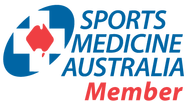|
ORIGINAL ARTICLE HERE: https://goo.gl/DdPtah
Exercise and movement may be the best medicine for back pain. You might be considering surgery or other intervention to treat your back pain. But less may actually be more for this common problem, and in many instances the best medicine is good old-fashioned movement and exercise. The enigma of back pain Back pain is one of the most common medical problems in the United States, according to the National Institutes of Health. It's also a little strange as far as ailments go. When you twist your ankle, you generally have pain that slowly goes away as the injury heals. Not so with back pain. Relief doesn't seem to be linked to healing because the pain is usually unrelated to an injury. In fact, back pain often diminishes over time, even when there is an underlying problem like a herniated disc or arthritis, says Dr. James Rainville, assistant professor of physical medicine and rehabilitation at Harvard Medical School. Adding to the mysteries of back pain is the fact that people tend to report more back pain in their 40s and 50s than they do as they get older. But back degeneration generally increases over time, so logically, people should have more pain — not less — as they age. In addition, as many as 80% of adults report at least one episode of back pain. The other 20% never experience back pain at all. But it's not because their spines are normal. Imaging tests on these pain-free folks show as much degeneration in their lower spine as everyone else has, says Dr. Rainville. The question is, why don't these changes seen on imaging cause them pain? The oddities of back pain are likely due to the fact that a neurological healing process — not a physical one — is at work, says Dr. Rainville. As the theory goes, when a problem occurs and triggers pain, it's your nervous system that actually adapts to the pain, and that's what makes discomfort go away, says Dr. Rainville. Exercise and movement may help your nervous system to make this adjustment more rapidly. Understanding back pain Degeneration in your spine is a natural part of aging. "A bulging disc, in some ways, is no different than the wrinkle next to your eye," says Dr. Rainville. Contrary to what many people believe, only rarely does back pain strike while someone is lifting something heavy or performing an intensive activity. "In cases of new-onset disc herniation or sciatica, only 5% of people were doing anything considered heavy physical exertion, like lifting an air conditioner," says Dr. Rainville. Those things are rare. Most people are doing simple tasks, such as leaning over to spit in the sink when brushing their teeth. "I commonly hear things like, 'I was just reaching for a pencil,' or 'I sneezed,'" he says. Back pain most often results from inevitable tissue failure caused by age-related deterioration. "There is no evidence that being careful will slow the process of disc degeneration down," says Dr. Rainville. After all, being careful won't stop any other signs of aging, such as wrinkles or gray hair. The genetics of back pain Your experiences with back pain may have a lot to do with your individual genetic makeup. "The symptoms associated with back pain are highly variable," says Dr. Rainville. "Pain can last anywhere from a day to three months." And just as some people are prone to heightened pain — which may occur in people with conditions such as fibromyalgia — some people are at the opposite end of the spectrum and less prone to pain. Research has shown that the tendency to experience more or less back pain runs in families. For example, identical twins often have similar histories of back pain, says Dr. Rainville. This is the case even if they have completely different lives and experiences — for example, if one twin has a desk job and the other performs heavy labor in construction. "These things are likely highly genetic," says Dr. Rainville. Strategies to help back pain The National Institute of Neurological Disorders and Stroke recommends several strategies to help ease back pain when it flares up:
Changing attitudes about back pain While back pain may be inevitable for many people, changing attitudes about the problem could be making it worse. In the past, people used to take back pain in stride and didn't generally seek medical help. "It's only really been over the past 30 years that more and more people have been seeking health care for back pain," says Dr. Rainville. But that hasn't reduced the prevalence of pain or disability. In fact, disability from back pain has actually increased over time. In 1990, a study ranked back pain as the sixth most burdensome condition in the United States. In 2010, it jumped to third place, behind only heart disease and chronic obstructive pulmonary disease, according to the National Institute of Neurological Disorders and Stroke (NINDS). Where back pain was once viewed a nuisance to work through, today, back pain stops many people in their tracks. "People have gotten stuck because they've been given the advice to be careful and stop moving," says Dr. Rainville. "This runs counter to everything that was taught for decades." Many doctors are encouraging a return to the past when it comes to managing back pain, with less emphasis on intervention and more on encouraging movement. Treating back pain Movement seems to be the stimulus to normalize pain responses in the nervous system. Studies on animals with spinal injuries show faster pain resolution among those forced to exercise than among those allowed to move less, says Dr. Rainville. "This is probably the result of a survival mechanism," he says. "If an animal in the wild doesn't get moving, it is eaten or starves to death." Movement also seems to help people. "People who get moving — back to the gym, back to cleaning the house — do the best," says Dr. Rainville. Surgery may be necessary for some back problems, such as conditions that are causing progressive nerve damage or that involve structural changes that need to be corrected, according to the NINDS. "But in a lot of cases it's less justified," says Dr. Rainville. So, if you're experiencing back pain caused by normal wear and tear, the message is that in most cases you don't need to stop your life and wait to heal. Move your body instead. Physical therapists can play a role in helping you gradually and safely increase your activity level, to desensitize your nervous system's response, so you can get back to your regular daily activities. Comments are closed.
|
�
Archives
July 2024
Categories
All
|
|
|
MENU
|
INJURY INFO
|
INJURY INFO
PHYSIO MOSMAN |
Copyright© 2024| Fit As A Physio | ABN 62855169241 | All rights reserved | Sitemap

 RSS Feed
RSS Feed



